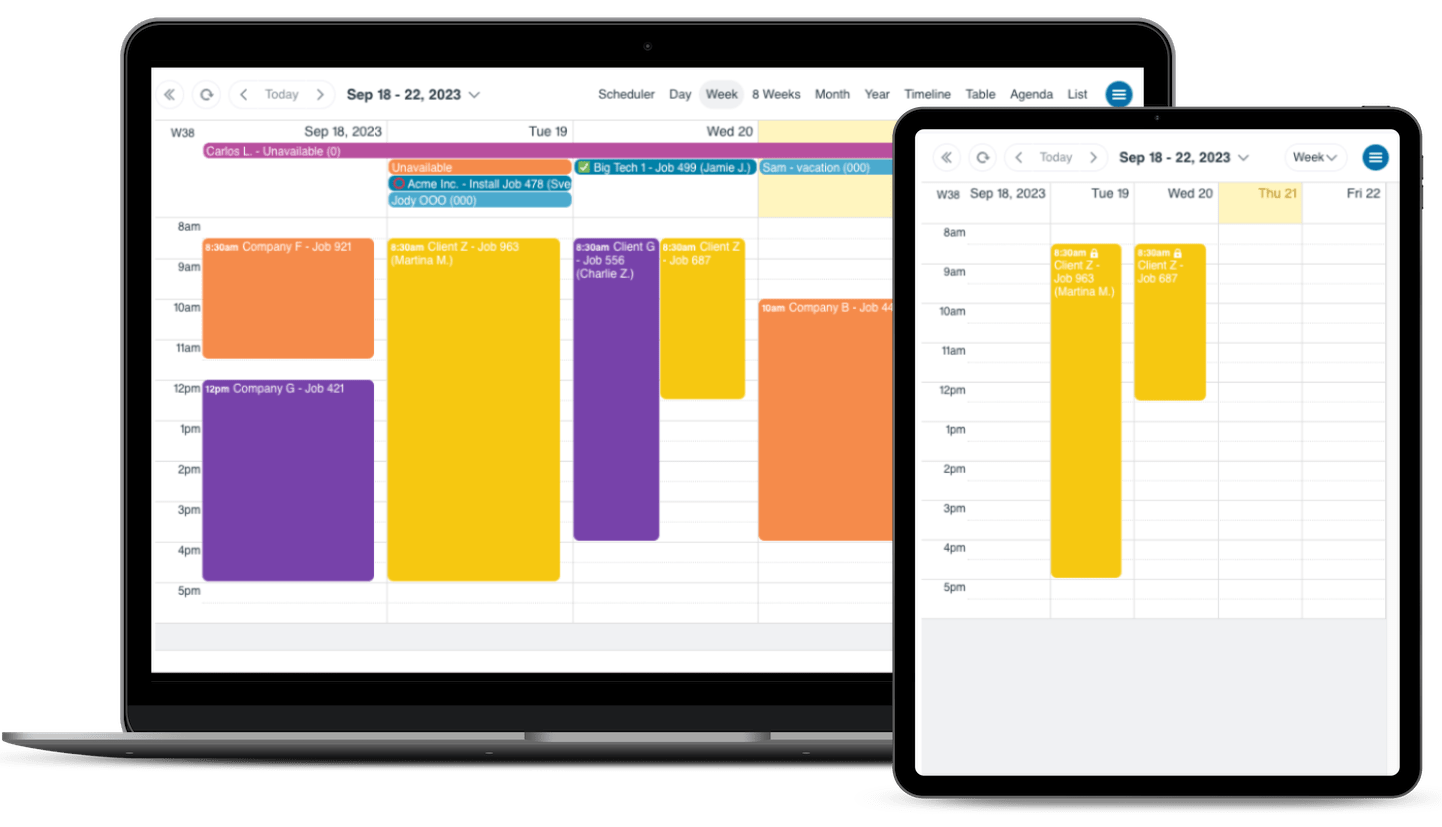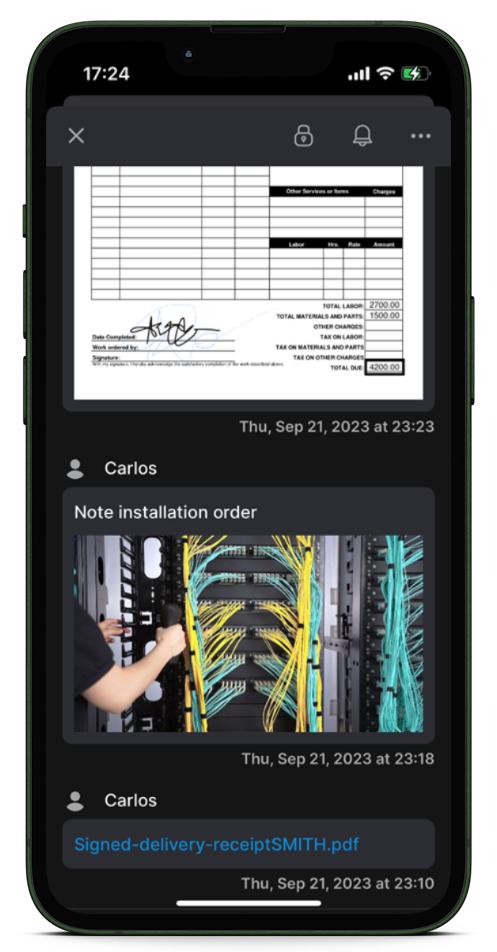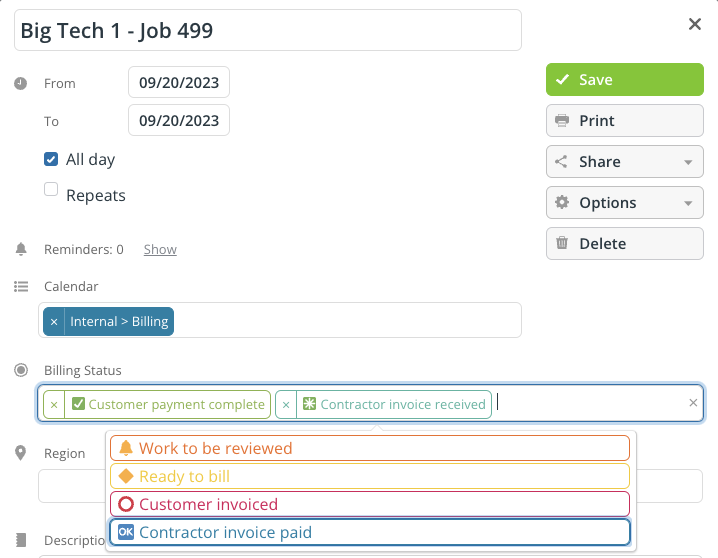Last updated Feb 22, 2024
As a small business owner or manager, you oversee all the happenings that affect the business. There are probably several groups of people you work with to keep the business on track: customers or clients, staff members, vendors and suppliers, and contractors. Contractors can be a great asset for small businesses, and allow you to scale capacity and provide more services without adding too much overhead. However, you need to manage contractor availability and track a more complex billing workflow, which can be a challenge.
Contractors may not be able to provide consistent hours, especially if they’re juggling assignments from multiple clients. You need a streamlined way to see their availability. When it comes to billing, you need documentation on completed jobs which can be hard to get especially if contractors don’t come into the office regularly. You may want to keep customer billing information and internal details confidential from contractors. And you need to track customer billing as well as contractor invoices and payment.
Visualize contractor availability and billing workflow
A Teamup calendar can help you visualize contractor availability and manage the billing workflow securely and efficiently.
Let’s take the example of a small service business that operates over a fairly large regional area. They provide technical support and services for their clients, primarily though contractors. They need a way to schedule services for their clients, view contractor availability, assign jobs to contractors, and ensure that all requested jobs are completed and billed.
Make contractor availability visible
To manage all these factors, they set up a calendar to keep staff and contractors connected as jobs move through the workflow.
Each contractor has a dedicated sub-calendar; these are organized in a folder. Each contractor can add events to their own sub-calendar, so staff know when they’re open or unavailable. It eliminates a lot of frustrating back-and-forth communication between staff and contractors. Instead of calling, texting, or emailing, a staff member can simply check each contractor’s calendar to view availability on whether they can take a job or not.
With customized access, each contractor can access the Available Jobs sub-calendar (with read-only permission) and their own sub-calendar, but can’t see other contractor’s calendars.
Get confirmation of completed work
When a client requests a job, a staff member adds the job to the Available Jobs sub-calendar with all the job details: location, services required, timing, and so on. If there are relevant documents for the job, those can be uploaded to the job. With all the details and files added directly to the calendar, contractors can get a complete picture of what’s involved. If other tools are part of the workflow, such as cloud-based file storage or industry-specific software, the relevant links can be added to the job. There’s no need to duplicate work orders, send emails, fax instructions, or confirm location: the information stays with the job as it moves through the workflow.

Contractors can view available jobs, and even have notifications when a new event is added to the Available Jobs sub-calendar. Then they can use event comments on the job to “claim” it, put in a bid, or simply confirm their availability. Once a bid is accepted or a contractor is chosen for the job, an employee moves the job onto the chosen contractor’s sub-calendar. Now other contractors can no longer view this job.
Once the job is completed, a contractor can use event comments to confirm the services are done. They can add notes and upload files (photo, signed work order, receipt, etc.) to document the work performed.

Keep billing confidential and streamlined
Once jobs are completed, they’re moved to the internal Billing calendar. These internal calendars aren’t visible to the contractors, only to authorized staff members. So billing details or other confidential information added in the billing process stays secure. As various parts of the billing workflow are completed, staff can update the status right on the calendar. So if one employee starts billing out jobs on Monday and another employee picks up the process on Tuesday, the hand-off is seamless. They can also attach receipts and invoices to the job, which is helpful both for immediate reference and long-term documentation.

A streamlined service business workflow
Depending on how your business is set up, you might want to adjust certain parts of this workflow. And that’s okay! Teamup is flexible, and this scenario is just one example of how you can incorporate Teamup to streamline your business. You can use other ideas to build a system that meets your needs to manage contractor availability, track billing workflow, connect other tools and resources, or streamline communication. For example:
- Create separate Job sub-calendars for different areas and organize them in Regional folders, so contractors only see available jobs in the regions they cover.
- Add a set of calendars to manage inventory, track orders and vendor payments, and schedule deliveries.
- Set up an iCalendar feed from each contractor’s own calendar to see their availability (rather than having them add entries to an Availability calendar for all the contractors).
The key concept is to connect all the people and pieces that matter for your business. If you can bring the separate parts together, it’s easier to manage your business and keep things flowing smoothly with less stress. See more about using Teamup to connect the multiple dimensions of field services or try out a live demo calendar.


